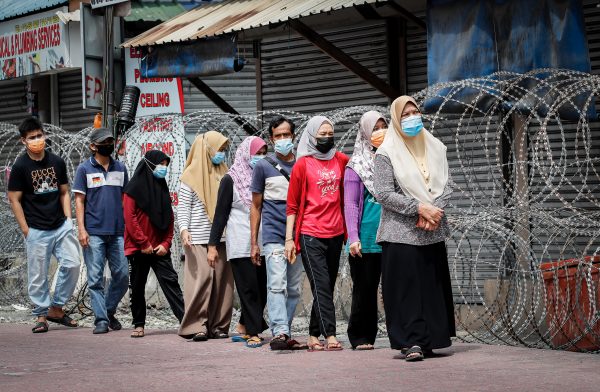By the summer of 2021, this positive picture had weakened. The duration of the COVID-19 crisis and the emergence of the Delta variant changed the game and put stress on East Asia — a region that has been slow to develop or purchase vaccines. New cases are rampant in Malaysia, Mongolia, Thailand and Japan. The number of COVID-19 deaths has risen sharply across the region compared to 2020 figures, particularly in Indonesia and Malaysia.
The East Asian and Oceanian model has fragmented into five groups, based on strategies (suppression, containment, mitigation), degree of international openness and use of vaccination.
The first group, which has pursued a COVID-19 zero or elimination strategy, includes Australia, China, Hong Kong, New Zealand and Taiwan. This group demonstrates continued high control of the virus, very little community transmission and public support for strong government actions. Vietnam, Brunei and Cambodia were also part of this group until July 2021 but have faced sudden Delta waves in July and August, triggering aggressive government responses. In particular, Vietnam’s contact-tracing methods have held up poorly against Delta. By October, these three countries may regain control or fall into the fourth group.
Due to their early success, group one countries were slow to ramp up vaccination campaigns. Instead, they relied on strict border controls and high-cost eradication strategies. A lively debate is now raging in Australia, Taiwan and China about the human and economic costs involved in their zero COVID-19 approach. Australia is now moving away from the zero-COVID approach. Hong Kong may soon move to the second group as well.
The second group — which contains South Korea and Singapore — pursues aggressive containment, strategic adaptation and targeted opening to international travel. These countries feature a high degree of control through mass testing, high-tech contact tracing and effective quarantine. Singapore is the lead case in this group, combining effective containment and the highest vaccination rate in Asia (77 per cent).
South Korea successfully spearheaded this approach (with 45 deaths per million in total and only 34 new cases per million) but remains vulnerable due to its low vaccination rate (37 per cent). While the South Korean public continues to give overall high marks to government actions, 61 per cent see a more divided society emerging from COVID-19.
Japan represents a third approach combining a mitigation strategy, low government controls, and limited contact tracing tools with high reliance on voluntary social restrictions (the so-called 3C approach of avoiding closed indoor spaces, crowded spaces and close-contact settings) and a strong health care system. Japan was unable to develop a vaccine despite its high industrial capacities and was slow to order vaccines despite the looming Tokyo Olympics. When the Tokyo 2020 Games opened on 23 July less than a quarter of the population was fully vaccinated, but as of 7 September it has reached 49 per cent. Japan’s COVID-19 outcomes are better than many countries but disappointing overall (131 deaths per million).
Tokyo avoided an Olympic superspreader event with great effort, but social gatherings during the Olympics made things worse. As a result, the Japanese public is frustrated: 59 per cent say that the country is more divided and 64 per cent say that the government has done a bad job handling COVID-19. This public anger played a large role in Prime Minister Suga’s resignation. Japan remains mostly closed to international travel, but its economy is experiencing a positive bounce.
The fourth group is one of overwhelmed containment approaches and reversal of 2020’s strong outcomes. In Malaysia, Thailand, Myanmar and Mongolia, the combination of cultural and religious festivals (such as the end of Eid in June), the reopening of the economy under social duress and business pressure, the emergence of the Delta variant, and political unrest have blunted effective institutional responses and created chaos. In July and August 2021, these countries lost control of surging COVID-19 cases. As of early September, the situation is showing some signs of stabilisation in all except Mongolia.
Indonesia and the Philippines represent a fifth South East Asian group, where a weaker health care system, economic pressures and difficulties in accessing vaccines have led to large spikes in cases, with some continuity from 2020 trends. But these two countries are so far maintaining political stability and legitimacy. As a result, based on official data of new cases per million (likely under-counted), they are currently still faring better than Malaysia or Thailand, which is a significant change from 2020.
East Asian approaches built on elimination and containment have proved difficult to pursue in the face of the Delta variant and growing socio-economic costs. As such, the largely successful 2020 East Asia COVID-19 model has partially fragmented in 2021.
Yves Tiberghien is Professor of Political Science, the Konwakai Chair in Japanese Research, and Director Emeritus of the Institute of Asian Research at the University of British Columbia. He is also a Distinguished Fellow at the Asia-Pacific Foundation of Canada. He is the author of The East Asian Paradox (Cambridge University Press 2021).

